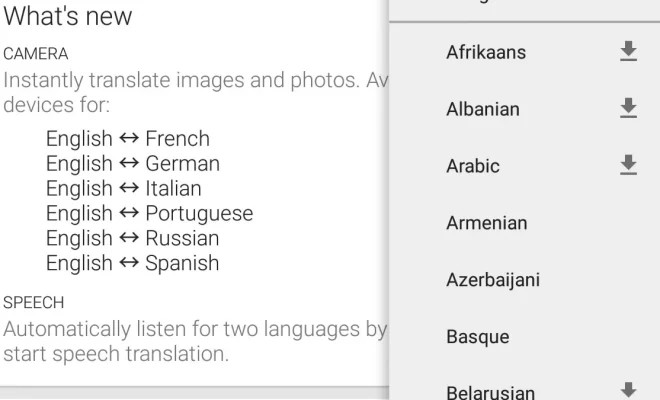Google Translate app adds 20 more languages for instant translation via your camera

Language barriers are a thing of the past, thanks to translation apps such as Google Translate. This powerful app has been helping people communicate effortlessly across languages with its ever-improving features. In a recent update, the Google Translate App announced a new feature designed to address an issue that sometimes confounds translation attempts – handling words with multiple meanings. This article delves into how this update is enhancing the user experience and ensuring more accurate translations.
Addressing the Issue of Ambiguity
One of the biggest challenges in translation is ambiguous words or phrases, which can have several different meanings depending on the context. The Google Translate App’s latest update aims to provide users with better translations by offering more context during translation results when it detects multiple possible meanings for a given term.
How It Works
The updated app now displays multiple translations for a single input text when there are more than one plausible interpretations. These alternative translations are listed below the primary translation, which allows users to choose the best-suited option given their understanding of the context. Additionally, the app provides usage examples for each translation alternative, so that users can make a more informed decision about which one accurately reflects their intended meaning.
Impact on Users
With this update, users can now expect more reliable and accurate translations since they will be able to deal with some of the ambiguity inherent in language—a particularly valuable tool for those who use Google Translate for important communications or during travels in foreign countries where misunderstandings could have significant consequences. Overall, this enhanced feature promises to:
1. Improve user confidence in their translations,
2. Help avoid confusion and miscommunications often caused by ambiguous terms,
3. Facilitate better communication between speakers of different languages.
Future Implications
This latest update is just another example of how advances in artificial intelligence and natural language processing are creating better language translation tools. As technology continues to progress, users can expect even more sophisticated features in Google Translate and similar platforms. This development could eventually lead to seamless real-time translations, bridging the gap between people from different linguistic backgrounds and fostering global understanding.
Conclusion
The latest update to the Google Translate App addressing the issue of multiple meanings is a significant step towards achieving more accurate translations. With this feature, users can now have better confidence in their translation efforts, reducing chances of miscommunication and promoting greater intercultural connections. The future implications of these advancements demonstrate the role technology plays in breaking down language barriers and bringing people closer together on a global scale.






